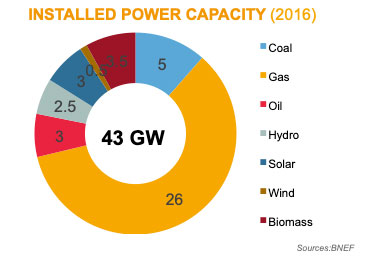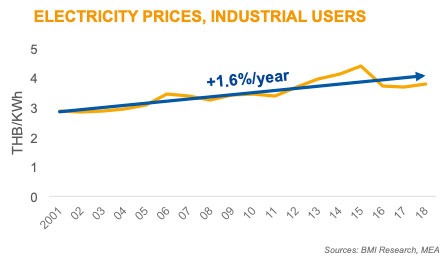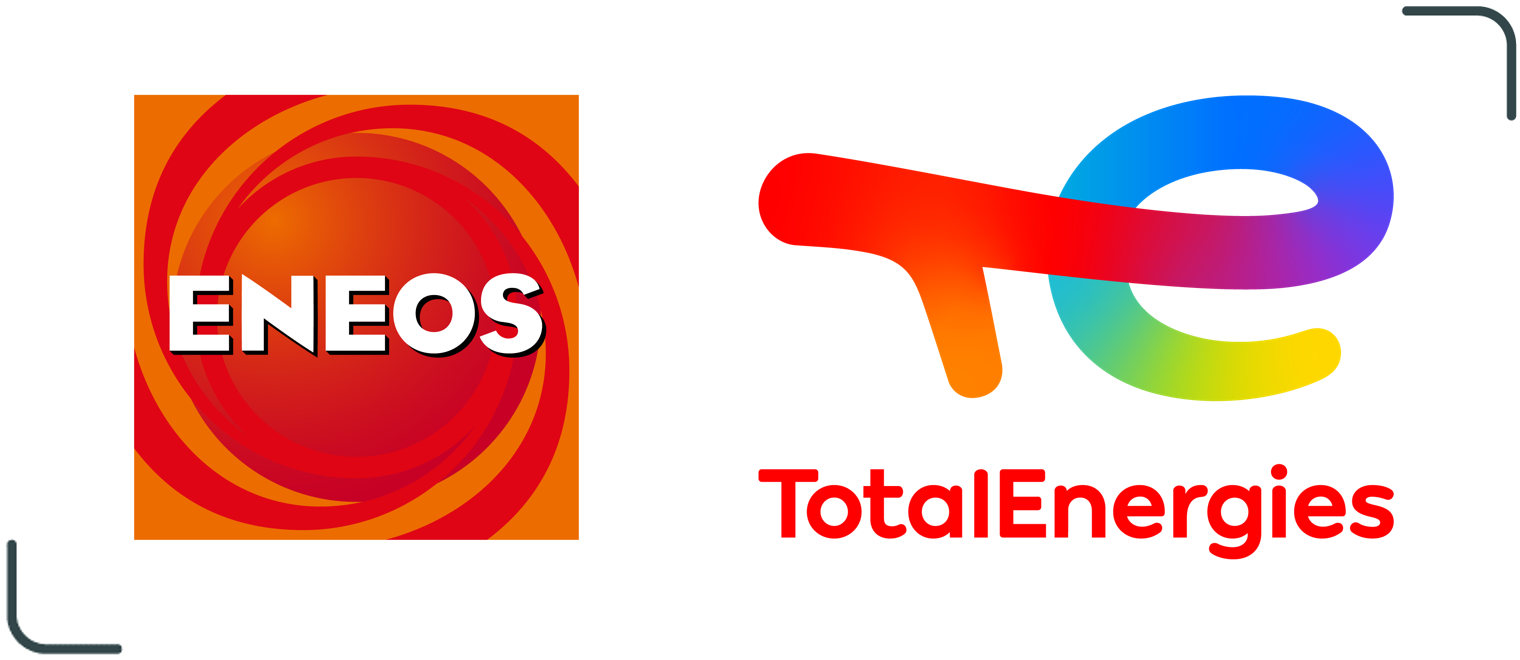
English | Thailand
markets Thailand
In Thailand, the energy consumption has doubled since 2000 and will rise by 75% over the next two decades. The government has committed to 30% of consumption to come from renewables by 2036, with 6 GW of installed solar capacity (3 GW in 2016). Regulated electricity tariffs have helped to restrain the rise in electricity costs in the country.
Regulated prices have helped to cushion the rise in electricity costs in Thailand

Installed Power Capacity (2016)
Energy sector overview
- Energy consumption has doubled since 2000 and will rise by 75% over the next two decades.
- C&I customers dominate (76% of total demand).
- Thailand wants 30% of consumption to come from renewables in 2036, with 6GW of solar capacity (from 3GW in 2016).

Electricity Prices, Industrial Users
Electricity tariffs evolution (C&I)
- The Thai government regulates electricity tariffs, which rose by 1.6% a year on average in the past 15 year.
- Currently: 12-13 US cents/kWh.
- Quality and reliability remain a concern for some firms.
Regulation
Government Lead Initiatives:
- Alternative Energy Development Plan (AEDP, 2015-2036) set a target of 30% of the country’s final energy consumption by 2036 coming from renewables
- AEDP Target for 2036: 19.6 GW of renewables, including 6 GW of solar, 3 GW of wind, 3.4 GW of hydro, 1.2 GW of biogas, 5.5 GW of biomass and 0.5 GW of waste
- 3.8 GW solar capacity will have benn installed by 2018, ahead of targets, Irena Remap now planning for 17.2 GW of capacity by 2036
- Thailand ratified the Kyoto protocol in 2002
- INDC: 20% reduction GHG compared to BAU by 2030
Implementation
- Quotas on commercial systems will limit growth with FiT, however a net-metering/net-billing scheme should soon be announced
- PV competitive with retail power prices > some leading companies target the self-consumption segment
- Self-consumption pilot scheme launched in 2016, 100 MW quota limited at 5 kW, for owned or leased installations. Evaluation during 2017, policy to follow
- Net-metering pilot scheme for 100 MW


